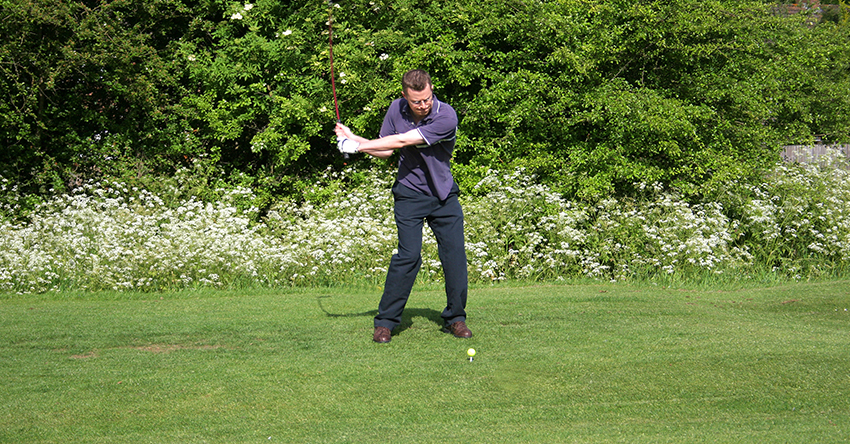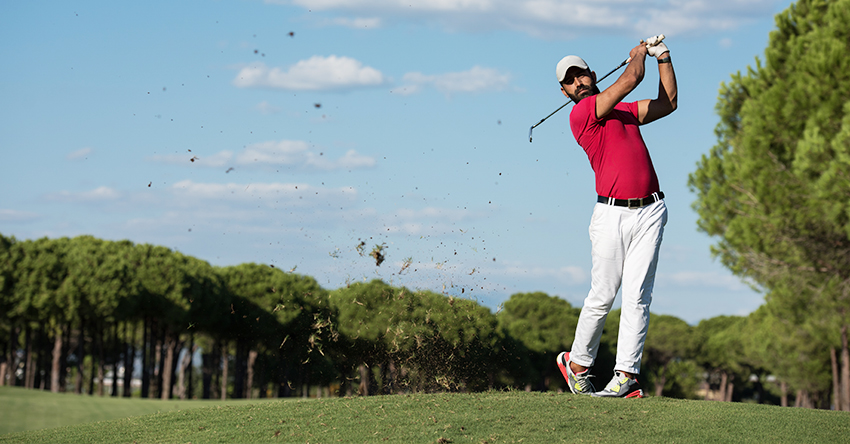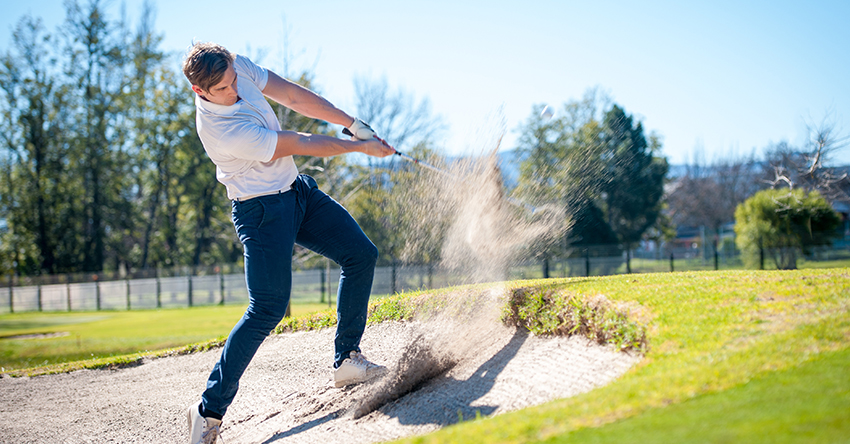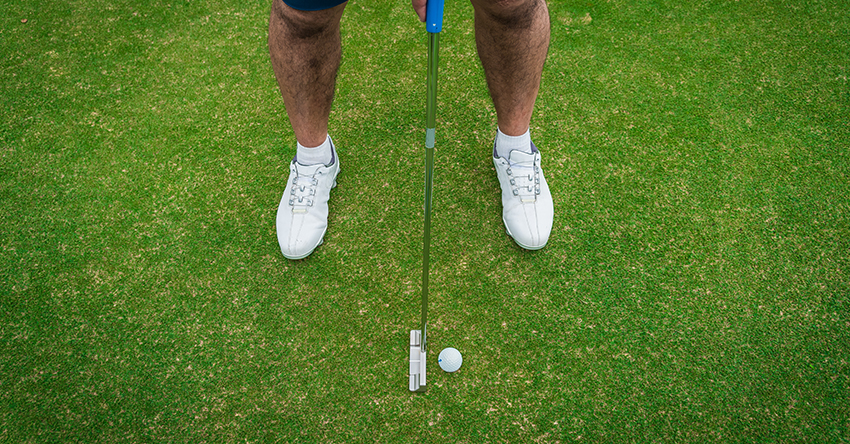
Just keep swinging, just keep swinging…That thought will probably come across your mind when you are playing your first round. You might have other thoughts too like “I hope I don’t look like an idiot or please don’t hit anyone.”
It’s no secret, golf is not an easy sport, and the mental part of the game goes along with the mechanics. Don’t worry, we know how intimidating the game can be so we’ll show you the ropes. Once you get the hang of it, your swing will come naturally.
How to Swing a Golf Club:
- Range Practice vs. Professional Lessons
- Grip
- Setup
- Takeaway
- Backswing
- Downswing
- Hitting The Ball
- Follow-through
- Chipping
- Bunker Shot
- Putting
Range Practice vs. Professional Lessons:
Which is better for your first golf round…practicing on the range or taking lessons? If you have the time and money to invest in a few lessons or are serious about picking this up for the long haul, lessons are definitely the way to go. However, if you don’t have the time to schedule lessons or are just trying to work on the basics, it’ll be worth your while to hit up the driving range to get adjusted to swinging. It always helps to bring a seasoned buddy along with you to make sure you have the form down.
Grip:
Please note that there are different grips you can try.
- Place your dominant hand where the grip meets the golf shaft.
- Then place the club in your non-dominant hand.
- Secure your hands by curling the bottom three fingers of your non-dominant hand. Set your thumb flat across the club.
- You’ll know when you have the proper grip when you feel the base, and the fatty part of your thumb on the handle.
The Setup:
- To aim, move the clubhead behind the ball and point your face where you want the ball to go. Afterward, change your stance so it’s perpendicular to your face.
- When using the driver, play the ball a little on the inside of your front foot. Combine that with a slight tilt of your upper body pointing away from the target which will help launch the ball at a high angle.
- Remember to stay loose and keep your arms and legs in motion when standing over the ball. A sign of a good drive stems from open and free motion.
The Takeaway:
- Your hands, arms, shoulders, and back should start moving backward in unison. Remember to not let your hands dominate the swing.
- When the club is parallel to the ground, the clubhead should be in line with your hands or just outside. The purpose is to have your swing be on a plane so it sets up for solid contact.
The Backswing:
- Stay in your posture. If you are out of position you’ll have to adjust by dropping down your stance and that will open the chance of making poor contact.
- Keep the right leg flexed so weight can shift to it. This ensures the body is storing energy by coiling.
The Downswing:
- To hit with power, you’ll want your lower body to lead the upper body as you’re turning. Otherwise, you’ll short-change yardage.
- Make sure your right elbow is close to your body when the club moves downward. This will help the club stay on the inside path.
- When maintaining the angle between your left arm and the club shaft when swinging down, you’ll have clubhead lag. The more lag you have, the more acceleration you’ll have at the bottom of the swing.
Hitting The Ball:
- To make solid contact, you’ll want to make sure you feel as your weight is shifted from the back foot to your front.
- The clubface should rotate closed just as your right arm starts to extend.
- Swinging the club from the inside will feel easy and smooth.
The Follow-Through:
- A good sign of impact is when your arms are fully extended toward the target. That means you’ve expended all of your energy from the backswing.
- The front foot should be stable with your weight firmly planted.
- Your torso should also continue turning left even as the ball takes flight.
Chipping:
- For chipping, you’ll want to set up with your weight on the front foot and the ball toward your back foot. This will help with making solid contact.
- Your wrists need to be firm.
- Keep your upper body turning throughout the shot. Your chest should face forward when completed.
The Bunker Shot:
- Hitting from the sand can be challenging. It’s important to start by taking a wide stance and letting your feet dig in.
- A key thing to remember is you are not actually hitting the ball on a bunker shot. You’re hitting the sand behind it, so take a big swing back and follow through.
Putting:
- Start by standing parallel behind the ball with your eyes looking straight down. Your hands should directly hang under your shoulders.
- The putter head moves straight back and forth. It only begins a circular arch when the stroke gets longer.
- Focus on putting the ball at a steady pace, and don’t forget to always follow through or you will cut it short.
Phew, we know that is a lot to cover with a golf swing. But, these basics will help you get started or at least get you through your first golf round. When hitting solid contact or sinking a putt, you’ll feel like a vet. You never know, you might find yourself playing more rounds after your first outing. Like anything in life, the more you practice, the more you’ll get better at it. Finishing off our series is Part 5 – Planning Your First Trip.









